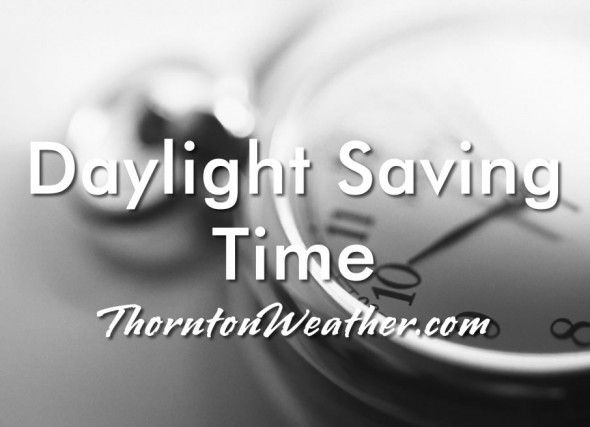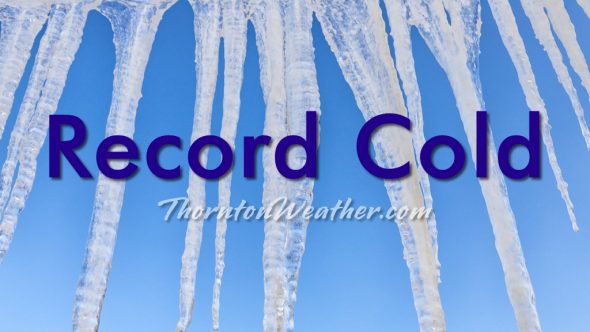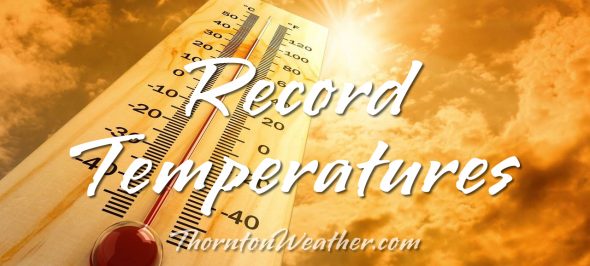
This past week we have enjoyed spring-like weather and it is easy to forget we are still very much in winter. Looking back at this week in Denver weather history we see that bitter cold and heavy snow are the alternatives that we can and have seen in our past.
From the National Weather Service:
18-20
In 1913…post-frontal snowfall totaled 6.9 inches in downtown Denver over the 3 days. Most of the snow fell on the 19th. Northeast winds were sustained to 21 mph with a measured extreme velocity to 24 mph on the 18th.
In 1924…light snowfall totaled 4.6 inches over the 3 days. This was the only measurable snowfall of the month. High temperatures plunged from 45 degrees on the 18th to 17 degrees on the 20th. Low temperatures dipped from 31 degrees on the 18th to only 8 degrees on the 20th. Northeast winds were sustained to 24 mph on the 19th.
In 1953…a major blizzard dumped 10.6 inches of snowfall at Stapleton Airport. Strong north winds at sustained speeds of 25 to 35 mph with gusts as high as 44 mph frequently reduced visibilities to 1/4 mile in blowing snow during the day of the 19th. The strong winds caused much drifting snow…making accurate snowfall measurements almost impossible. Precipitation from the storm totaled 1.13 inches. The 1.01 inches of precipitation on the 19th was the greatest calendar day and 24 hour precipitation ever recorded in the city during the month of February.
In 1987…large amounts of new snow fell in the Front Range foothills. The foothills received 10 to 20 inches of new snow with 4 to 8 inches on the adjacent plains. On the 19th…flight delays occurred at Stapleton International Airport where snowfall totaled 4.2 inches and east winds gusted to only 18 mph on the 19th. Schools were closed in the foothills above Boulder.
19-20
In 1924…4.6 inches of snow fell in downtown Denver. This was the only measurable snow of the month. Northeast winds were sustained to 24 mph on the 19th.
In 1937…post-frontal heavy snowfall totaled 8.4 inches over downtown Denver. Most of the snow…6.6 inches…fell on the 20th when north winds were sustained to 16 mph with gusts to 18 mph. The temperature dipped to a low of 9 degrees on the 20th.
In 1939…post-frontal snowfall totaled 5.4 inches in the city. The snow covered streets and highways with a coating of ice as the temperature fell from 36 degrees at 2:00 pm on the 19th to a low of 4 degrees at 3:00 am on the 20th. Many motorists were marooned for several hours. Northeast winds were sustained to 24 mph on the 19th.
19-21
In 1971…heavy snowfall totaled 9.0 inches at Stapleton International Airport where north winds gusted to only 16 mph. Most of the snow occurred on the 19th and 20th. The 24 hour snowfall of 8.2 inches was the greatest in February since 1953.
20
In 1937…6.6 inches of heavy snow fell in downtown Denver.
In 1976…a cold front produced north wind gusts to 49 mph at Stapleton International Airport where snowfall totaled 4.7 inches. North winds at sustained speeds of 20 to 30 mph with higher gusts persisted throughout the day…producing much blowing snow. East of the city…winds gusting 40 to 80 mph caused blizzard conditions and produced drifts 2 to 4 feet high.
In 1981…a vigorous cold front at midday produced strong northeast winds at 20 mph with gusts to 30 mph and billows of blowing dust reducing the visibility to 3 miles during the afternoon. Even stronger winds from the north at 25 mph with gusts to 45 mph in snow and blowing snow reduced the visibility to 1/4 mile during the evening. Snowfall totaled only 2.6 inches at Stapleton International Airport.
20-21
In 1997…heavy snow fell in the foothills. Snowfall totals included: 16 inches at Eldora Ski Area; 15 inches at South Turkey Creek; 14 inches at Conifer and Morrison; and 11 inches at Blackhawk…Evergreen…and Intercanyon. Only 1.0 inch of snow fell at the site of the former Stapleton International Airport. Northeast winds gusted to 32 mph at Denver International Airport on the 20th.
In 2014…high winds occurred in and near the foothills of Boulder and Jefferson Counties. Peak wind reports included: 93 mph near Gold Hill; 89 mph at NCAR Mesa Lab; 83 mph at the National Wind Technology Center; 76 mph…in Boulder…4 miles east-northeast of Nederland and the Junction of Colorado Highways 72 and 93; and 75 mph at Lyons. Scattered electrical outages were reported in Boulder…Denver and Littleton…which affected 3400 Xcel Energy customers. At Denver International Airport…a peak wind of 50 mph was observed from the west on the 21st.
21
In 1901…northwest winds sustained to 43 mph with gusts to 46 mph warmed the temperature to a high of 55 degrees.
In 1935…strong west to northwest winds sustained to 30 mph with gusts to 34 mph produced considerable blowing dust. The Chinook winds warmed the temperature to a high of 60 degrees.
In 1967…west winds gusting to 53 mph produced some blowing dust at Stapleton International Airport. Winds were strong and gusty all day.
In 1988…high winds were reported along the foothills with 90 mph in east Boulder where the winds knocked out a few street and traffic lights. The strong winds whipped a grass and timber fire in Boulder canyon. The fire threatened some homes for a time…but was extinguished before causing any significant property damage. West winds gusting to 35 mph at Stapleton International Airport warmed the temperature to a high of 63 degrees.
In 2017…strong winds knocked a huge tree onto a house in Loveland. No one was injured after the tree fell into the house…which included a 10-week-old baby. The house suffered extensive damage and the family was displaced.
21-22
In 1909…a major storm dumped 12.9 inches of heavy snowfall over the city. North winds were sustained to 37 mph on the 22nd. Temperatures during the storm hovered in the 20’s.
22
In 1893…northwest winds were sustained to 36 mph with gusts to 50 mph.
In 1900…northwest winds sustained to 40 mph with gusts to 45 mph warmed the temperature to a high of 61 degrees.
In 1910…a cold front caused a remarkably sharp drop in temperature from 43 degrees at 3:00 am to only 3 degrees at 8:30 am. These were the high and low temperatures for the day. Early west winds switched to northeast behind the front.
In 1927…west winds were sustained to 42 mph with a measured maximum velocity to 60 mph.
In 1954…strong and gusty west winds persisted throughout the day. The highest wind gust recorded at Stapleton Airport was 58 mph.
In 1960…snowfall totaled 5.9 inches…producing near-blizzard conditions in snow and blowing snow at Stapleton Airport where northeast wind gusts to 40 mph reduced visibility to 1/2 mile.
In 1986…high winds occurred in the foothills. Wind gusts of 65 to 70 mph were reported at Golden Gate Canyon…and a peak gust of 83 mph was recorded at Echo Lake. Northwest winds gusted to only 29 mph at Stapleton International Airport.
In 1988…a wind gust to 83 mph was recorded in Boulder with 80 mph clocked at Rollinsville. Northwest winds gusted to 45 mph at Stapleton International Airport.
In 1996…wind gusts to 63 mph were reported in western Elbert County. Southwest winds gusted to 45 mph at Denver International Airport.
In 1999…strong post-frontal…Bora winds developed over the foothills and spread over the northeast plains. Peak wind gusts included: 87 mph at Golden Gate Canyon; 84 mph at Wondervu; 80 mph at the National Center for Atmospheric Research mesa lab; 75 mph at the Rocky Flats Environmental Test Facility; 74 mph at Jefferson County Airport near Broomfield; 72 mph at the Gamow Tower on the University of Colorado campus in Boulder; and 60 mph at Bennett. West to northwest winds gusted to 44 mph at Denver International Airport.
In 2000…thunder was heard across much of metro Denver. Thunderstorms over southwest metro Denver produced 1/4 to 1/2 inch diameter hail at Pinehurst Country Club. A thunderstorm at Denver International Airport produced wind gusts to 34 mph. This was only the 6th time since 1891 that thunder had been reported in February.
Continue reading February 20 to February 26: This Week in Denver Weather History →





